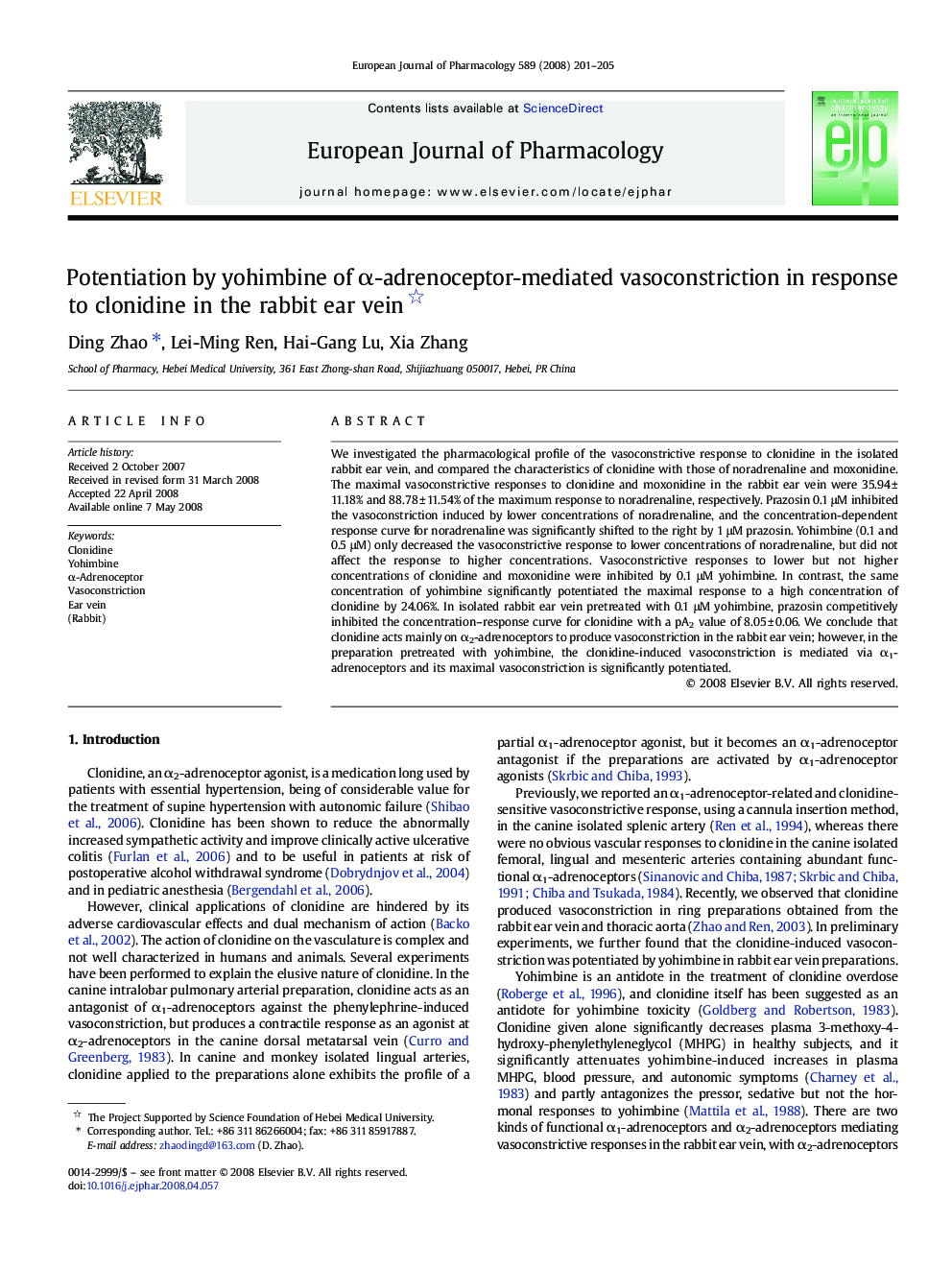| Article ID | Journal | Published Year | Pages | File Type |
|---|---|---|---|---|
| 2535115 | European Journal of Pharmacology | 2008 | 5 Pages |
We investigated the pharmacological profile of the vasoconstrictive response to clonidine in the isolated rabbit ear vein, and compared the characteristics of clonidine with those of noradrenaline and moxonidine. The maximal vasoconstrictive responses to clonidine and moxonidine in the rabbit ear vein were 35.94 ±11.18% and 88.78 ± 11.54% of the maximum response to noradrenaline, respectively. Prazosin 0.1 μM inhibited the vasoconstriction induced by lower concentrations of noradrenaline, and the concentration-dependent response curve for noradrenaline was significantly shifted to the right by 1 μM prazosin. Yohimbine (0.1 and 0.5 μM) only decreased the vasoconstrictive response to lower concentrations of noradrenaline, but did not affect the response to higher concentrations. Vasoconstrictive responses to lower but not higher concentrations of clonidine and moxonidine were inhibited by 0.1 μM yohimbine. In contrast, the same concentration of yohimbine significantly potentiated the maximal response to a high concentration of clonidine by 24.06%. In isolated rabbit ear vein pretreated with 0.1 μM yohimbine, prazosin competitively inhibited the concentration–response curve for clonidine with a pA2 value of 8.05 ± 0.06. We conclude that clonidine acts mainly on α2-adrenoceptors to produce vasoconstriction in the rabbit ear vein; however, in the preparation pretreated with yohimbine, the clonidine-induced vasoconstriction is mediated via α1-adrenoceptors and its maximal vasoconstriction is significantly potentiated.
